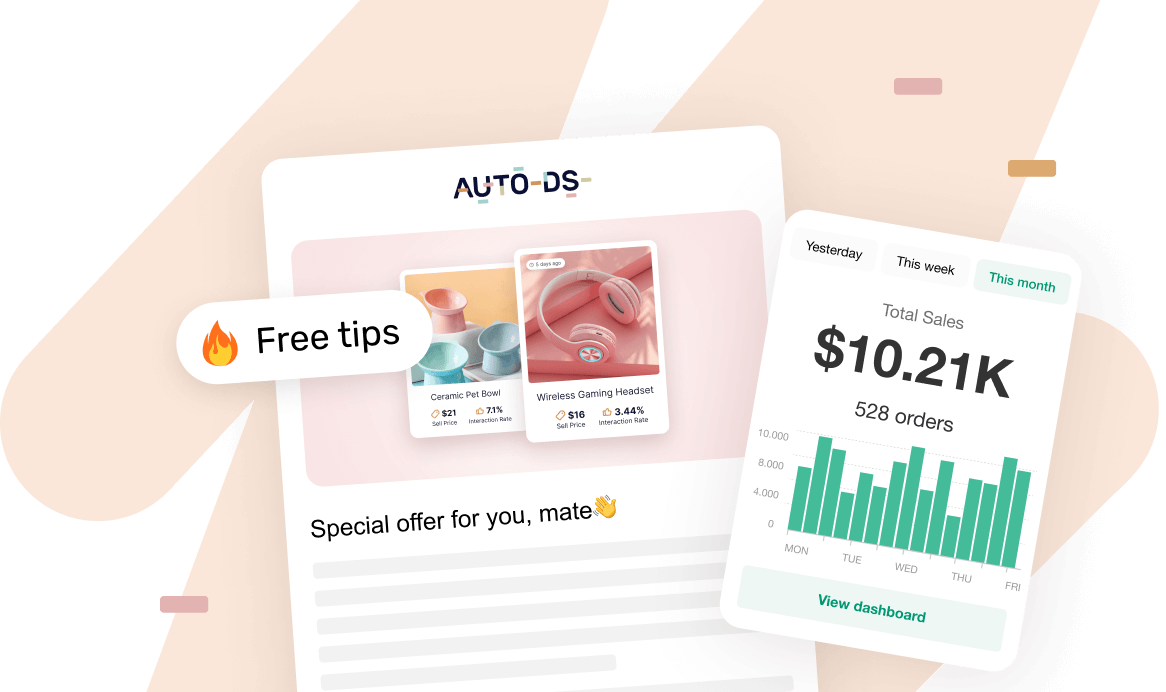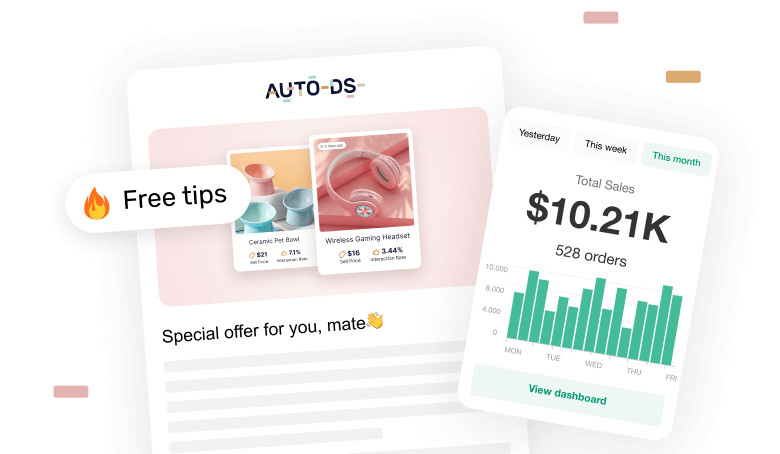Choosing your first dropshipping product is one of the first challenges we face when working with this business model. How do we win over our audience? Which categories are better to avoid? What can we do to know, with absolute certainty, whether an item will lift our sales and set us apart from the competition, or barely move the needle?
These questions are totally normal, especially if you’re just getting started. We’re going to answer all of them by digging into which products are best for dropshipping beginners and then by looking at valuable tools that help automate the process.
Tools like AutoDS make finding winning dropshipping products much easier thanks to an intuitive dashboard packed with features that help you scale your business. But let’s not get ahead of ourselves.
A dropshipping product is any item you can sell without holding inventory, provided it’s legal, platform-compliant, and simple to ship.
Winning products pair proven demand with low competition, solve a clear problem, and sit in an impulse-friendly price window.
Research smart: scan best-seller pages, social trends, and Google Trends; then analyze competitor listings.
AutoDS speeds this up with product research, one-click import, real-time monitoring, and analytics.
What Are ‘Dropshipping Products’?
We can’t start dropshipping without knowing what dropshipping products are, right? So let’s take it step by step. This business model is broadly based on a triangle between a supplier, you, and your customer.
You don’t need to store or manufacture products. What you do is list your supplier’s items in your store and, once customers, thanks to your marketing efforts, buy from you, you pass the order along to the supplier, who handles the packaging and shipping.
This way, you earn the difference between the price your supplier charges you and the price you charge your customer, minus any fees like postage. Some products have higher profit margins than others. Strategies like high-ticket dropshipping, for example, involve investing larger amounts in higher-end items you can sell at a higher price.
You must always factor in all your business expenses to estimate an approximate profit margin.
So, in a sense, any product you sell using this workflow is a dropshipping product, but be careful: there are specific dropshipping niches that perform much better than others. And of course, there are products you simply can’t dropship; just like in any business, you can’t sell literally anything.
I strongly recommend avoiding the obvious categories:
- Weapons, ammunition, explosives, and flammable items
- Medical supplements, drugs, prescription medications
- Branded products without authorization
- Food products
It’s basically common sense, but to be sure, it helps to run a quick mini-checklist: Is the product legal? Is it regulated? Are we complying with the rules of the platform we’re using as our base of operations (eBay/Amazon/Shopify)? Do we have a real profit margin that makes sense for us? Is it likely to create more hassle than it’s worth?
To sum up, a dropshipping product is an item you can sell without holding your own inventory, that fits a positive-margin model, and that allows you to scale. Automating your processes makes that last part much easier.
With tools like AutoDS, you can streamline product discovery, product importing, stock and price updates, order fulfillment, and much more.
Criteria for Choosing a Winning First Product
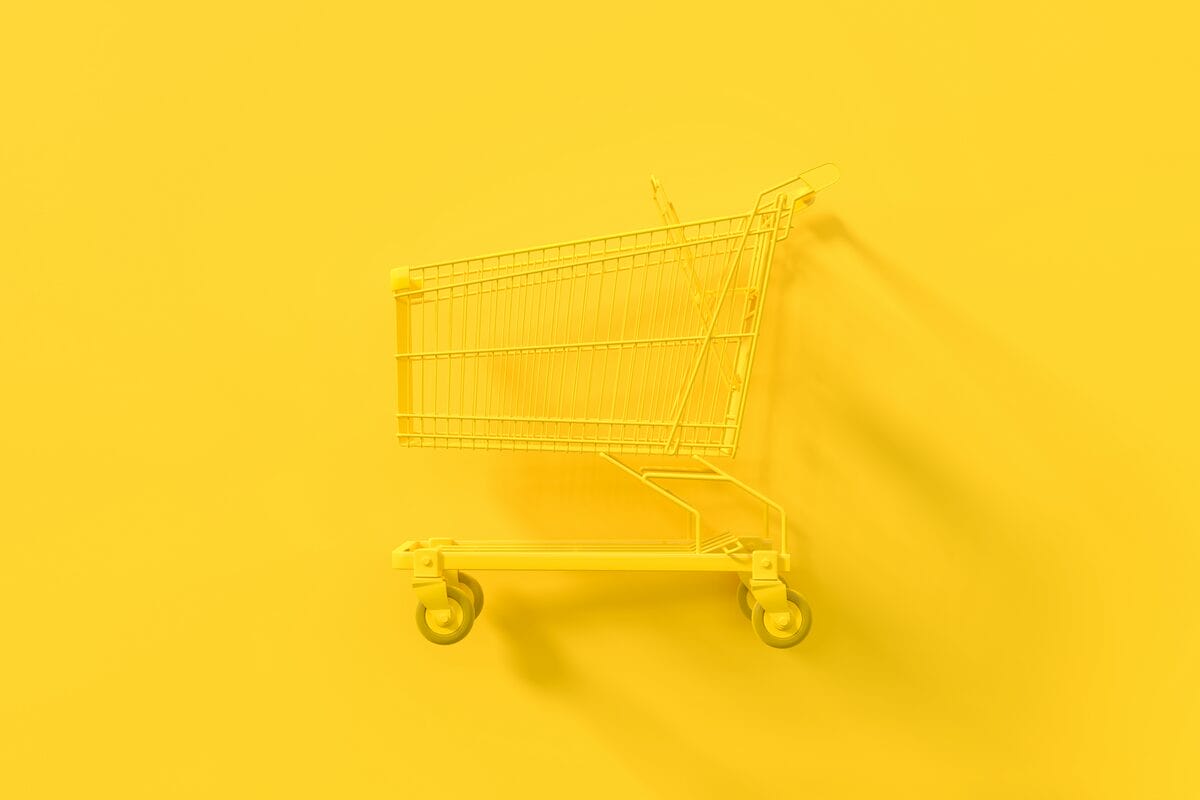
Now that we’re on the same page about dropshipping products, let’s dig into what winning products are. Sure, you can take the definition above and make almost any item “fit.” But certain products can make the road to success easier, boost your sales, and help your business scale.
Learning how to identify those items and knowing where to find them is an essential part of every dropshipper’s journey. AutoDS provides the most complete product market research tools for beginners, but let’s go over the basics first.
So, what characteristics turn an item into a winning product? Here are some of the main ones:
High Demand, Low Competition
It’s evident that high demand helps, but if you’re just getting started and haven’t carved out your space in the vast world of e-commerce, picking something everyone else is selling won’t make you competitive. The goal is to find that sweet spot: high demand without a saturated field of sellers.
Affordable Price Range
Except for the high-ticket items mentioned above, it’s smart to focus on reasonably priced products, generally in the $20–$50 range. That way, you protect healthy margins which, while not explosive, can compound and help you scale as engagement grows.
Problem-Solving
Winning products usually solve a real customer problem (sometimes one the customer didn’t even realize they had). We’re not talking about answering existential questions worthy of Hamlet, but everyday needs: pet hair removers, makeup organizers, indoor-friendly toys for cold days, car tech accessories, ergonomic home-office gear, fitness essentials, and much more.
Impulse Buy Potential
Here, quirky and eccentric won’t beat clear and straightforward. If a shopper has to Google or read two encyclopedias to understand what you’re selling, they’ve already bought from someone else. Aim for easy-to-understand items.
Reliable Shipping Options
This seems minor, but it’s not. If you sell life-size ceramic elephants and your ads make everyone want one, you’ll have a bad time; most will arrive broken, or you won’t be able to ship them. The example is a bit extreme, but it illustrates the point: pick items that are easy and fast to ship.
How to Do Product Research As a Beginner (Step-by-Step)
Great, you’ve got the basic theory to choose your first dropshipping product like a pro. But it’s not all reading. Practice makes perfect, right? I’m here to help: let’s walk through a simple step-by-step process so that, by the end of this article, you can go straight to stocking your brand-new store with products that will help you stand out.
1. Explore Marketplaces for Ideas
Before you take action, it’s smart to scan the full landscape. Take the time to visit the places where you know you’ll find trending products. Keep these in mind:
- Best-seller pages: Almost every platform has a “best sellers” or “most wished for” section, which lists items that are statistically bought or wish-listed the most, like Amazon Movers & Shakers or eBay Trending.
- Social media: Social platforms inevitably surface what’s trending. If a product goes viral on TikTok, there’s a good chance it will perform well in your store. Keep in mind that each network has its own audience, so depending on your niche, it might be more useful to study what’s trending on Instagram or Facebook.
- Google Trends: This Google feature is handy for dropshippers. You can enter a term (the product or the niche) and see metrics that reveal demand: where it’s searched most, which times of year it peaks, which demographic segments show more interest, related products, and more.
Now, if you want to hit the gas and speed up product selection, you’ll want a little help from AutoDS.
With AutoDS, you don’t just get access to an all-in-one automation tool that streamlines all your dropshipping processes; you also operate from an intuitive dashboard where you can jump into sections like Hand-Picked Products: a curated, constantly updated feed of proven winning products. This will save you a ton of time.
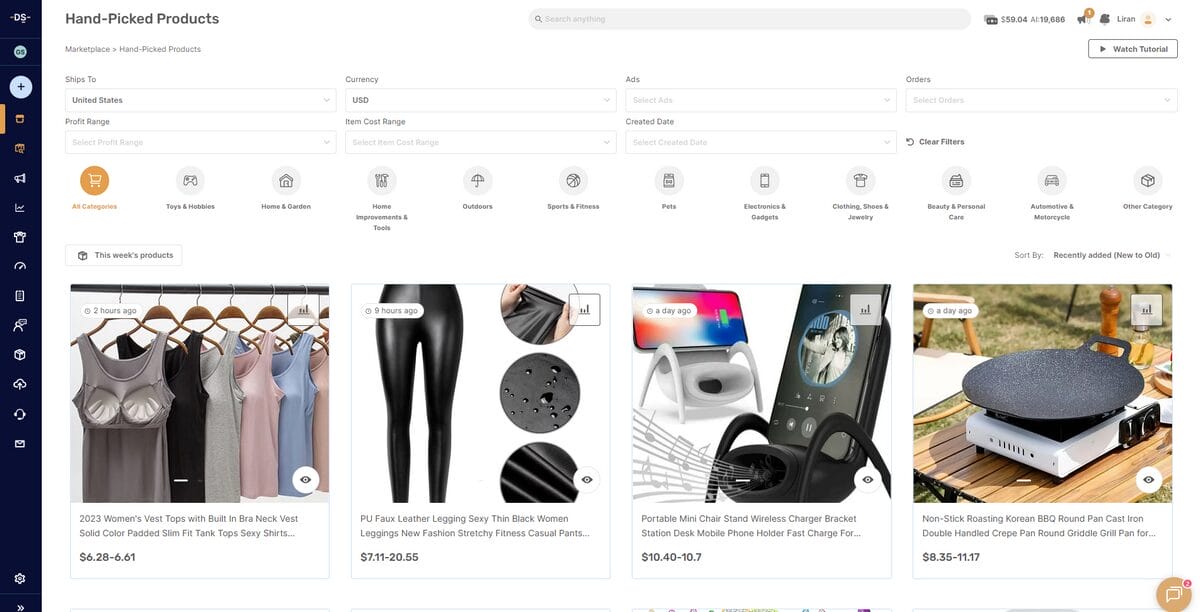
Save time choosing products, and everything else will become more efficient with fewer errors. Try AutoDS features with the 14-day trial for $1!
2. Analyze Competition
Now that you’ve got a snapshot of potential products for your store, it’s time to take a deep breath and zoom out. We need to make sure we’re pulling the right levers.
Start by searching the exact item you picked (or its closest substitutes) on eBay and Amazon, not just to check how many people are already selling it, but to spot the sales angles others are missing that you could capitalize on.
Pay attention to recent sales signals (“sold in the last 24 hours/7 days”), Best Seller badges, and the overall texture of reviews. Patterns in complaints are gold: if shoppers keep mentioning flimsy parts, confusing sizing, or late delivery, you’ve just found your differentiation roadmap: better quality control, clearer sizing charts, faster, trackable shipping.
AutoDS also gives you a huge boost here. AutoDS connects beginners with a network of reliable suppliers to keep a competitive margin. It also lets you compare prices and profit windows far more efficiently than doing it all manually.
💡 Pro Tip: A little competitor “spying” (ethically, legally, and sensibly!) goes a long way. Use AutoDS’s Ads Spy Tools to analyze what’s working and not in competitor listings.
3. Validate Profit Margins
It’s time to put numbers to the dream. Take the standard selling price you saw on marketplaces and work backward: subtract the supplier cost, shipping, marketplace/payment fees, and a small promo cushion (10–15% you might use for discounts or ads). What’s left is your real margin—not the wishful one.
As a rule of thumb, aim for a 30–40% markup after fees, which gives you room to test creatives, handle a few returns without crying, and still reinvest in growth.
Guess who can help with this? Yep, AutoDS. You can set automated pricing rules tied to your target margin from the AutoDS platform. What does that mean? If your supplier changes the price, your retail price adjusts automatically.
4. Test Demand Quickly
Life and business often come down to trial and error. That shouldn’t scare you with this model, because dropshipping is low-risk: you don’t need significant upfront investments to start selling, so the downside is limited. That gives you room to test different ways of approaching your customers.
The smart move here is to launch small and learn fast: build tidy listings with strong product images, add a short video if possible, and set a modest budget. Track what matters, fast. If you’re getting scroll-stopping interest (decent CTR) but no Add to Cart, your offer or page clarity is off. If you’re getting ATCs but no Purchase, check shipping times, trust badges, and payment friction.
From there, depending on your goals, you can track each product’s performance and decide what to tweak to optimize results. The great thing about automation is that with AutoDS, you can import products in just one click, paste the product URL, and push it to your store/marketplace.
AutoDS’s automated pricing also lets you zero in on the highest price you can charge while keeping sales volume high. That speed lets you test multiple products while the platform monitors performance to show you what’s working and what’s not.
How AutoDS Makes Choosing Your First Product Easier
We’ve been discussing the enormous advantages of using a tool like AutoDS as your go-to ally when choosing your first dropshipping products. Let’s recap them more concretely so you can see how to pave your road to healthy margins with tools built to help you.
Product Research Tool
Instead of opening twenty tabs and drowning in lists, AutoDS combines everything: a search tool with a database of trending items and curated sections (like “hand-picked”). That gives you concrete ideas fast, backed by signals that matter (reviews, sales, and more).
AI Product Recommendations
Not sure where to start? The AutoDS system continually suggests products with a solid beginner profile and even helps with titles and descriptions. Less guessing, more “let’s test this now.”
One-Click Import
When you find a candidate, send it straight to your store (Shopify, eBay, WooCommerce and many more) in one click. There is no tedious downloading and re-uploading of every product detail; you can move from idea to testing in minutes.

Performance Analytics
Then it’s numbers time: sales, revenue, costs, and margin per product. The dashboard shows what’s moving and what isn’t, so you can double down where it pays and drop what doesn’t.
Beginner-Friendly
If a dropshipping platform isn’t beginner-friendly, it isn’t a good platform. AutoDS’s intuitive dashboard is precisely what you need to stay oriented while you take your first steps in the dropshipping business model.
5 Beginner-Friendly Product Picks
And as if that weren’t enough, I want to recommend five beginner-friendly products for making it this far into the article! With tips like these, you’ll kick off your dropshipping journey on the right foot. Let’s look at a few winning products that are perfect for getting started:
Soap-Dispensing Palm Dish Brush
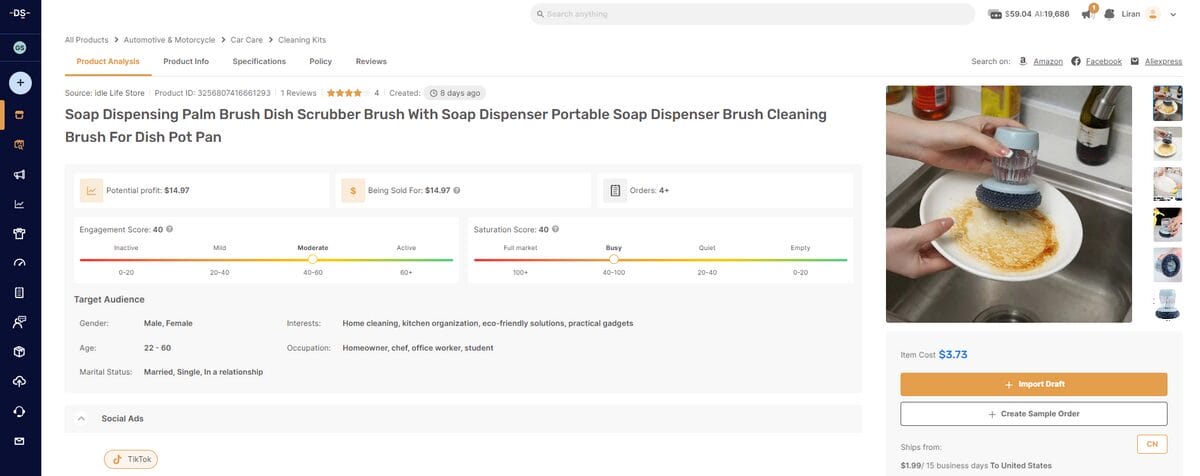
Household gadgets are one of the cornerstones of dropshipping. It’s a great niche for beginners because these products tick the abovementioned boxes.
Take this example: it solves a real problem (we all hate washing dishes and want a tool that makes it easier), it’s small, portable, clearly easy to ship, and well-priced. Plus, admit it; you probably didn’t know it existed five minutes ago, and now you kind of want one too. That’s proven demand.
Pet Seat Cover
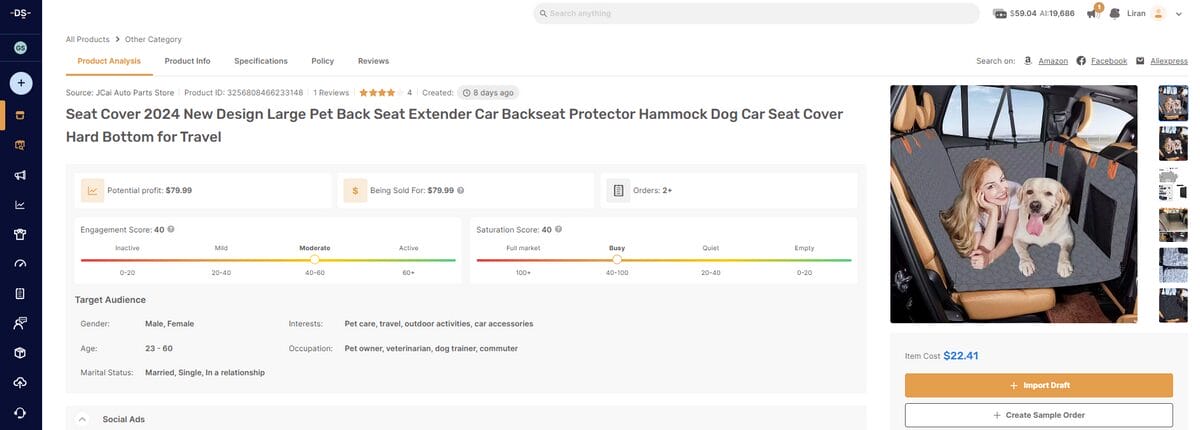
Quick note we hadn’t spelled out: there are evergreen products (steady demand all year) and seasonal niches (big spikes around holidays/summer/winter, etc.).
Pet products are firmly in the first camp; pet parents want the best for their furry friends year-round. Clever items like this seat cover hit two niches at once (auto accessories + pets) and still meet all the winning product criteria we’ve covered today.
Fun Montessori Kids’ Toy
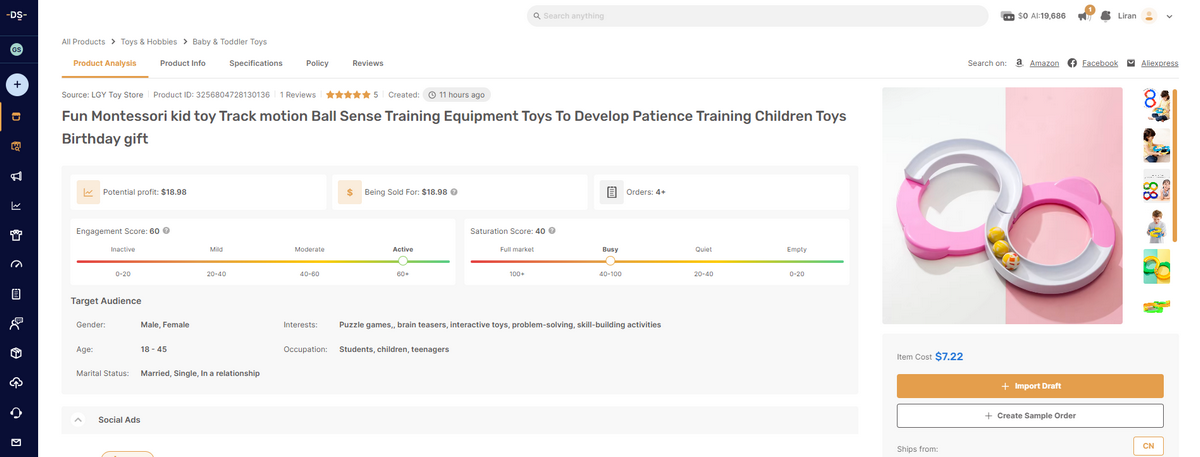
Speaking of evergreen, few things are as evergreen as baby/kids products; births don’t take holidays. That’s why items for newborns and toddlers are easy to introduce into the market. This one’s also an educational toy: it works as a gift for entertainment and doubles as a pick for parents who want to encourage learning-through-play.
Smartphone Case
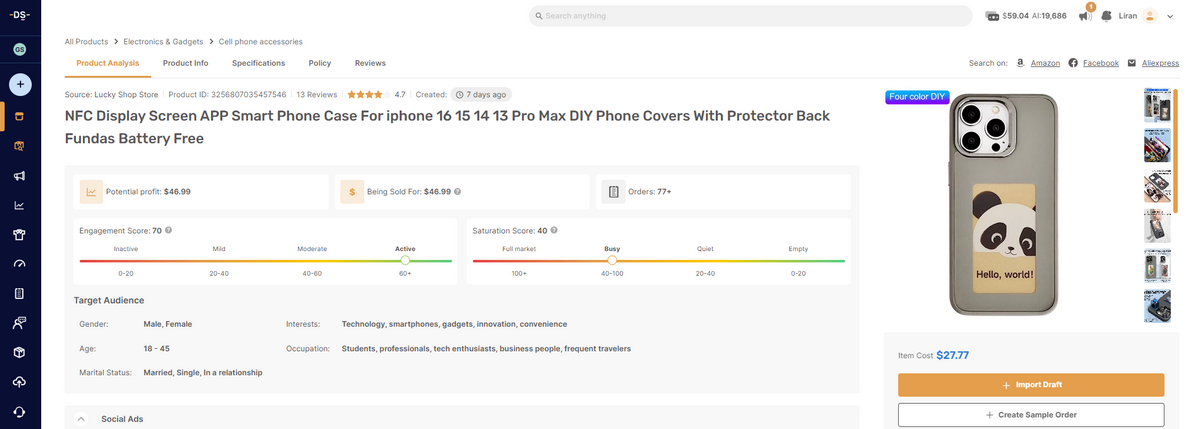
Tech accessories are another strong niche. First, they tend to be problem-solving or target very specific needs. Second, they let you target different audiences, especially tech lovers, younger shoppers, and trend-chasers.
📢 Marketing Tip: highly “TikTok-able” products like these are perfect for influencer marketing strategies.
Yoga Pants
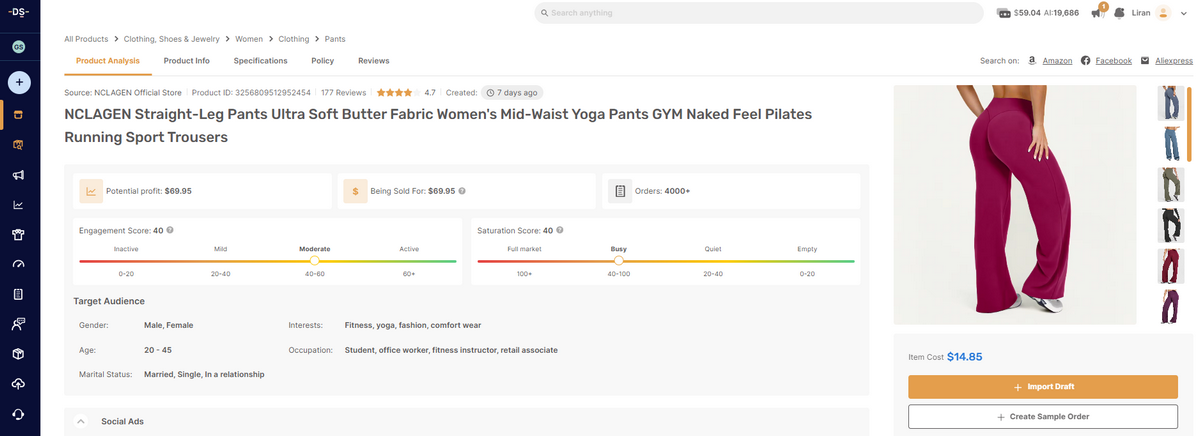
The rise of healthy-living, fitness, and DIY trends gives you a clear hint about potential winning products. Bonus: yoga pants also live in the fashion niche, which is, of course, also evergreen. That’s a classic win–win.
Frequently Asked Questions
Which products are best for dropshipping beginners?
Affordable, problem-solving, impulse-buy items with reliable shipping. They’re easy to explain in seconds and give you room for healthy margins while you learn.
Who has the best dropshipping product recommendations?
AutoDS offers AI-driven product suggestions tailored for beginners. That means less guesswork and faster testing with products that already show strong signals.
Can I test multiple products at once?
Yes, AutoDS lets you import and test multiple items quickly. You can spin up small experiments in parallel and double down on whatever gains traction.
How do I know if a product has demand?
Check marketplace trends and validate with AutoDS product analytics. Combine those signals with a quick ad/organic test to confirm real-world interest.
Should I pick a niche for my first product?
Yes, it helps you target the right audience and shape your brand direction. A clear niche also simplifies content, ads, and supplier selection.
Choose Your First Dropshipping Product With AutoDS’ Help
Picking your first product isn’t about having “the perfect nose” for trends; it’s about running a simple playbook: demand you can prove, margins that survive fees and shipping, and logistics that won’t break on the way to your customer.
You just walked through how to find ideas, scan competition, validate profit, and test fast with small, controlled budgets. Do that, and you’ll stop guessing and start learning from real signals.
This is where automation pays for itself. AutoDS speeds up research and helps you pick winners faster. It also protects margins and adjusts prices when supplier costs move. The result is a tighter feedback loop: less time copy-pasting, more time iterating on offers, creatives, and customer experience.
And this is my cue to sign off, but not before recommending a few more high-value articles so you can keep learning about the wonderful world of dropshipping:













